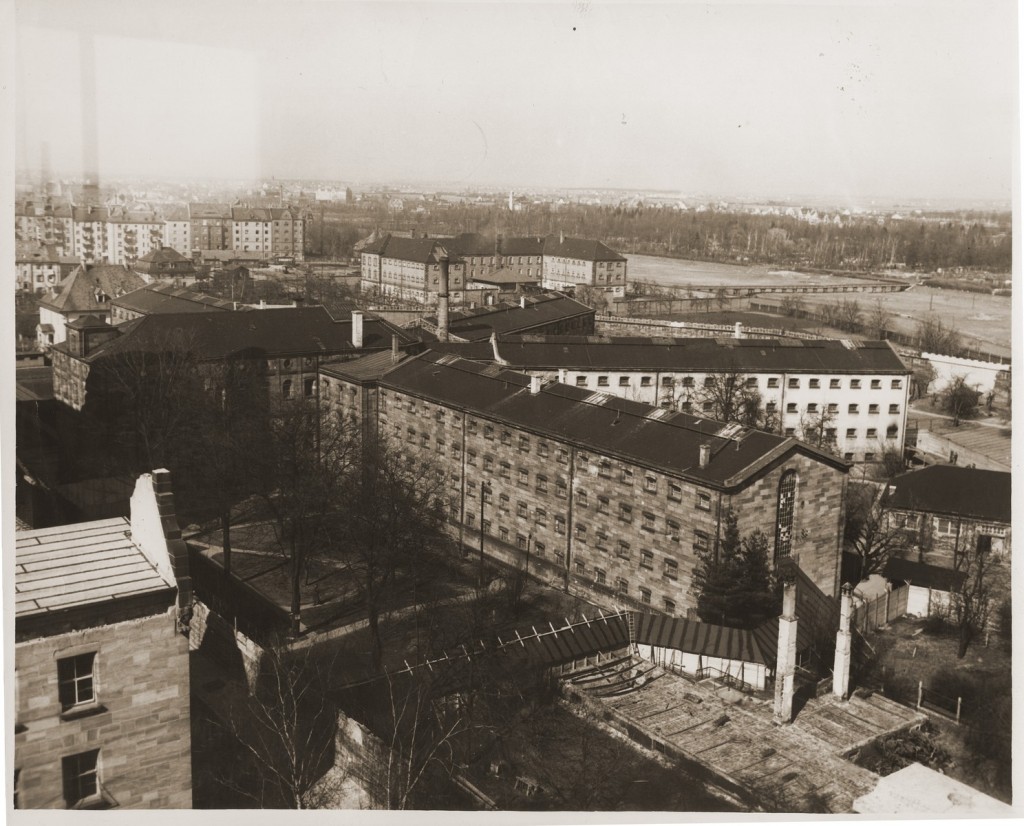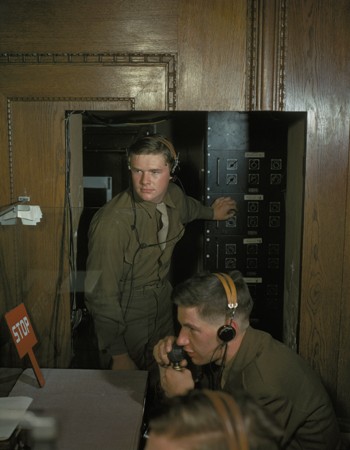
The Nuremberg Courtroom
Why Nuremberg?
During the summer of 1945, SHAEF (Supreme Headquarters Allied Expeditionary Force), and its successor organization USFET (US Forces, European Theater) conducted a survey of possible locations for the International Military Tribunal (IMT). They concluded that Nuremberg should be selected as the location. Despite the fact that more than three quarters of the city lay in rubble, Nuremberg contained the only undamaged facilities—the Palace of Justice—that were extensive enough to accommodate the trial.

After a tour of the city and the Palace of Justice, which contained 20 courtrooms and a prison capable of holding 1,200 prisoners, the American, British, French, and Russian delegations all recommended to their governments that Nuremberg be the site of the first IMT.
Major General I.T. Nikitchenko, the head of the Russian delegation who then served as the Russian judge during the IMT, agreed to this with the provision that Berlin was chosen as the seat of the tribunal. Jackson, head of the American delegation and Chief of Counsel for the United States during the IMT, agreed; however, he expected Berlin to be merely symbolic. On October 18, 1945, the tribunal's first official session took place in Berlin, where prosecutors delivered the indictments. The court then adjourned to Nuremberg.
Building the Courtroom while Building the Case

The primary focus of the Palace of Justice's reconstruction was that of the main courtroom, which was doubled in size to accommodate the needs of the trial. A wall was knocked down to double the size of the room and the ceiling was raised. A visitor's gallery and a press gallery that held 250 members of the international press were also constructed. Also crucial was the installation of equipment, wiring, and cabling for the simultaneous translation system.
Translation in the Courtroom
The Nuremberg Trial was an early experiment in simultaneous translation. The Charter of the International Military Tribunal stated that the defendants had the right to a fair trial, and that all proceedings be translated into a language that the defendants understood. Because of the trial's complexities, the subject matter, and the different languages spoken by the defense, prosecution, and the judges, it was decided to use a simultaneous translation system would work best.

IBM developed the translation system based upon the Filene-Finlay system and an earlier translation system they had developed and installed at the League of Nations in 1931. In this system, speeches were pre-translated and then read simultaneously in the various languages. This set-up, however, would not allow for the extemporaneous exchanges that generally occur during a trial. In Nuremberg, there were five channels in the translation system. The first channel contained the verbatim transmission of the speaker. The other channels were English, Russian, French, and German. Each participant in the trial had a set of headphones and could dial to whichever channel he/she preferred. There were six microphones placed in the courtroom, one for each judge, the witness stand, and the speaker's podium.
Three teams of interpreters worked under the direction of Colonel Leon Dostert and Commander Alfred Steer. Two teams would alternate shifts in the courtroom, while a third team sat in another room listening to the proceedings on standby. A fourth team of auxiliary translators was on hand for other languages such as Polish and Yiddish. Two other interpreters were on the bench behind the judges.
The trial could not proceed any faster than 60 words per minute—as fast as dictation speed, but this was four times as fast as consecutive translation, in which the speaker pauses frequently to allow translation to occur. A monitor operating a control switch in the interpreting section would flash a yellow light to notify the speaker if they were going too fast, or a red light indicating that he should stop and repeat what he just said.
IBM provided the new technology free of charge for the trial, providing that the United States Government pay the cost of shipment and installation of the technology. Through the success of the system in Nuremberg, they were able to later sell the system to the United Nations.
Critical Thinking Questions
- The International Military Tribunal at Nuremberg is among the best known postwar trials. Investigate trials conducted by other countries after the Holocaust.
- Investigate some of the ways in which the International Military Tribunal was a major model for the future.
- Beyond the verdicts, what impact can trials have?

